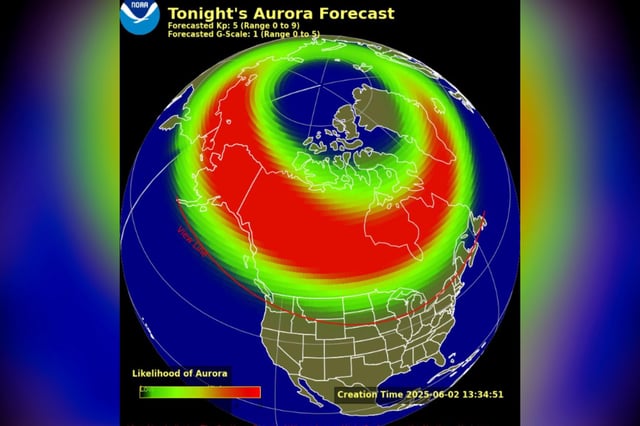Overview
- Earth was hit by a coronal mass ejection on June 1, triggering G3-level geomagnetic storms that made the northern lights visible on June 2
- NOAA forecasts that elevated geomagnetic activity will persist into June 3 as Solar Cycle 25 remains at its peak
- Aurora viewing is best between 9 p.m. and 2 a.m. local time with peak activity around midnight in northern regions such as Alaska, the northern US states, and, in the UK, Scotland and Northern Ireland
- Geomagnetic storms have briefly disrupted high-frequency radio communications and could affect power grids and satellite operations
- Dark, clear skies and an unobstructed northern horizon improve visibility, and using a camera with manual exposure or night mode can reveal faint auroras



